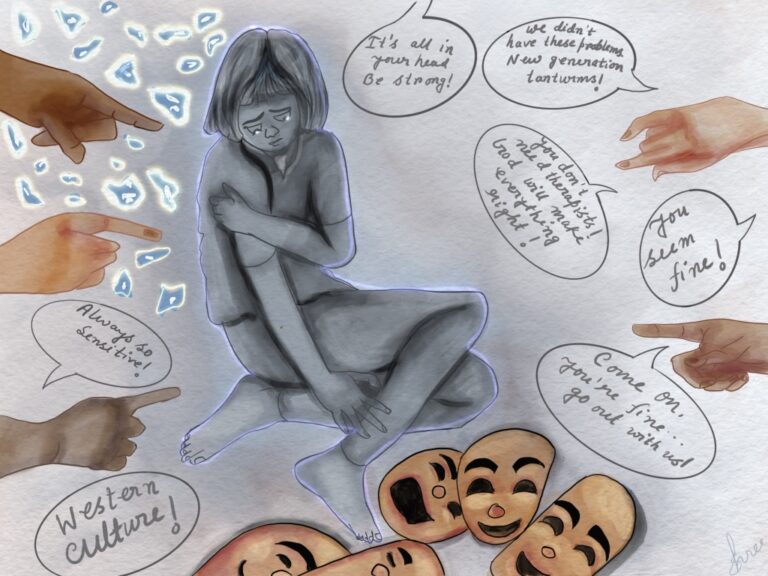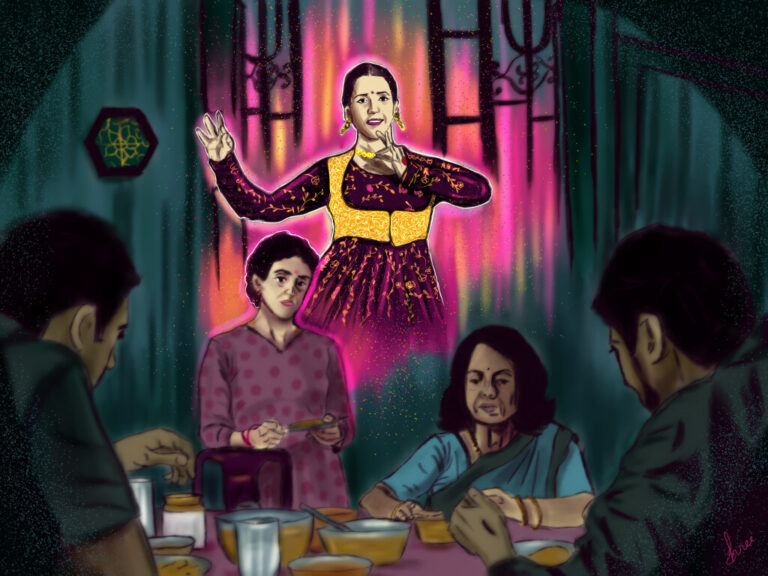Wasted opportunity: Reflecting on the media’s response to SSR’s death

Drupad U is an independent researcher whose areas of interest include media, society, democracy and their intersections.

[responsivevoice_button voice=”US English Male” buttontext=”Read out this Theel for me”]
Trigger Warning: Suicide and Mental Illness
The news of Sushant Singh Rajput’s (henceforth, SSR) death came as a shock to us all. The news of an actor taking his life, that too one who had not even reached his prime, made it even more unfathomable. Unfortunately, mental health works in mysterious ways — ways that we have not understood yet owing to the nature of mental health discourse and research around the country, and even in the world.
SSR’s untimely passing provided an opportunity for the country to have a serious discussion on what mental illness looks like and feels like. People were visibly affected by his death and this could have been the chance to have an honest conversation surrounding an actor that everyone seemed to love. Yet this chance was thrown away without much consideration.
After accusations by an actor, the blame games started and so did the mud slinging. The focus of the media then shifted to finding the killer(s) and the reasons for his death, analyses of his mental health and his visits to therapy thereby sensationalising this tragic event of his death. Nepotism, low film earnings and canceled projects among other things became the media’s suspects. Investigation of the event is the job of assigned institutions and yet once again the media conducted trials of its own.
Responsible reporting
The job of the media should be to talk about mental health in general, not Sushant’s mental health. To speculate on his struggles is cannibalistic. The best person to tell Sushant’s story would be Sushant, and the next best solution is for his family and close friends to talk about him and his life, only if they wish to do so. That would be the best way to honor the dead and to advance our discourse on this matter. In addition, the abysmal reporting, including pushing his family to comment, the morally obscene headlines used and the general insensitivity around how the news was presented is a mirror that news agencies and media houses must look at. It is our job as members of civil society to show that mirror to them.
Studies have shown that when suicide is reported, there is an increase in deaths by suicide. In fact, the amount of increase is “proportional to the amount, duration, and prominence of media coverage.” In addition, a four year study by Jeong et al found that emergency room visits for both self-injury and suicide “increased following the announcements of celebrity suicides.” One study found that suicides rose by almost 10% following Robin Williams’ death. Therefore it is imperative that media channels discuss an event like SSR’s death with maturity and responsibility in order to limit pushing at-risk individuals over the edge. Mental illness is a public health issue and it is the responsibility of all members and institutions of society to maintain one where individuals do not find themselves at risk of severe mental health issues.
Many countries have media guidelines on reporting suicide. The Press Council of India has also released a set of guidelines on September 13, 2019 based on the WHO’s 2014 Report on Suicide specifying how suicides should be announced. They focus on not sensationalizing reports, not using social media as sources or news and not placing the news of the suicide prominently among other instructions. In fact, in a study on media coverage and suicide, it was concluded that “the greatest reduction in copycat suicide may sometimes comefrom reducing the sheer quantity of news on suicide as opposed to the perceived quality of news reporting.” Regardless, all of these guidelines were ignored. The damage caused by this is already starting to show. Many fans of the actor have died by suicide. Even with the news about the fans, many reports have used language that goes against the PCI’s guidelines.
The crisis at hand
There is an urgent mental health crisis in the country today. It is not only a taboo to speak about it in this country, but as a concept, it is also something that doesn’t exist for many individuals. It is often brushed off and ignored. The discourse around mental health seems to be increasing. However, it is only within urban, middle class, English-speaking communities where it has made in-roads. This is probably owing to its rise as a popular discourse in western liberal democracies. We do not talk about mental health in rural areas, in areas of low economic stability, in areas of high population density, in residential areas with a lack of natural environment, in areas with poor utilities, and within social groups like scheduled castes and scheduled tribes etc.
Once, when we were discussing our own struggles with poor mental health, a wise friend of mine told me that we should discuss problems and compare solutions, and not vice-versa. What we needed to do after the news of his death was discuss the crisis at hand today and the solutions we have at our disposal. In addition, any mental health discourse must initially seek to explain why and how people get depressed so that any myths about who can suffer from mental illness and when can be dispelled. As far as sources are concerned, mental health crises do not stem from unitary factors. There are often complex reasons for depression. These reasons may be intertwined, or may apply separately, depending upon each case. Therefore, to say that a certain phenomenon took the life of an actor is both incomplete and lazy. To speculate is unnecessary and irresponsible. We cannot truly be sure of what was bothering him.
What we can do with confidence and nobility is to do our best to ensure that more people do not suffer from depression and subsequently die by suicide. That can be done through increasing discourse on the epidemic of mental health using sources backed by science, and shining light on the many efforts being done by the members of civil society and pushing the State to institute reform in this regard.
Questions to ask; inroads to make
In lieu of all this, I have made a list of things mass media should have talked about prominently (other than nepotism or Bollywood!). This is a list of questions that would have served a better purpose. Perhaps it would be of use to ask these questions to ourselves and discuss these with our families and friends. It would also be beneficial for the relevant stakeholders to engage in dialogue regarding these matters.
General
- What is mental illness and why does it exist?
- What does it mean to be depressed?
- What is the difference between depression and feeling sad?
- What are the different kinds of mental health problems that occur?
- How does one fight poor mental health?
- Why are so many young people depressed in India?
- Why are so many old people depressed in India?
- Who is likely to be more depressed in the country and why?
- Why has the suicide death rate in India increased by 40.1% between 1990 and 2016?
- Why does India have the highest suicide rate in the South-East Asian region?
- Why does India have one of the highest female suicide rates in the world?
- Why are men twice more at risk than women in the country?
- Why is suicide the leading cause of death during the lockdown in India?
Regarding at-risk groups
- Why are twenty-eight students killing themselves every single day (more than one an hour)? (Hint: It’s not the movies)
- How is bullying in academic institutions and elsewhere contributing to mental illness and suicides?
- Why is there a system that creates so much pressure on young children still standing today?
- Why are students in Kota killing themselves by the dozens every year?
- Why are we focusing on installing hang-proof fans instead of addressing the real crisis at hand?
- Why have we allowed high stress environments for children like Kota to come up in the first place?
- Why are young people in the age 15-29 the most at-risk age group in the country?
- What drove students like Payal Tadvi, and Rohith Vemula to suicide, and what could have been done to save them? Also, how does caste-based and identity-based bullying contribute to mental illness?
- Why are so many farmers dying by suicide in Maharashtra and Vidarbha? And why have successive governments done nothing to counter this problem?
On parenting
- How do we talk respectfully and considerately with our children about mental health?
- How can family members have honest conversations around mental health?
- What are the visible indicators of poor mental health in young children?
- How can schools ensure good mental health of their students?
Relief and Therapy
- What can the State do to help alleviate this crisis?
- What can civil society do to alleviate this crisis?
- How does therapy help?
- Do medicines help in countering mental illness?
- What is the current therapist to patient ratio? How are they different in urban and rural centers?
- How do mental health helplines operate and how do they help?
- How are counselors on campus beneficial?
Lived experience (interviews with survivors and family members who are voluntarily willing to speak about it)
- What is it like to lose a family member to suicide (interviews with family members who are voluntarily willing to speak about it)?
- What is like to be depressed and to suffer suicidal thoughts?
- What is it like to get therapy?
- What is it like to take medicines for mental health?
Conclusion
The role of media can be instrumental in developing mental health discourse that is respectful and non-dismissive. It can also be detrimental and set back development and understanding of the same. It is the same for suicide as well. In the case of SSR’s death, the media (both news as well as social media) reported in ways that has set back the debate by many years. If we are to advance on this front, then all media must report responsibly and sensitively. It is therefore imperative that the guidelines provided by the PCI be followed strictly and that there be more sensitive reportage of deaths by suicide (and by extension all deaths).
Many thanks to MC and JS for their inputs.
If you or anyone you know may be feeling suicidal, please contact these all-India helplines: AASRA – +91-9820466726, Vandrewala Foundation – 18602662345, 7304599837. You may also see a list of hotline numbers by state here.
Featured Image Credits: Nijwam Swargiary on Unsplash








its nice article about which guideline didn’t followed by media. After death any person they have to give some respect when cover it..